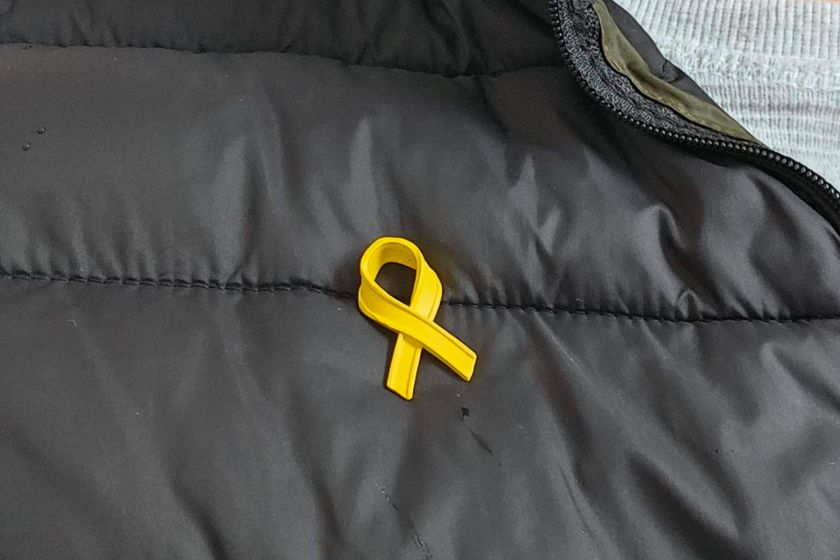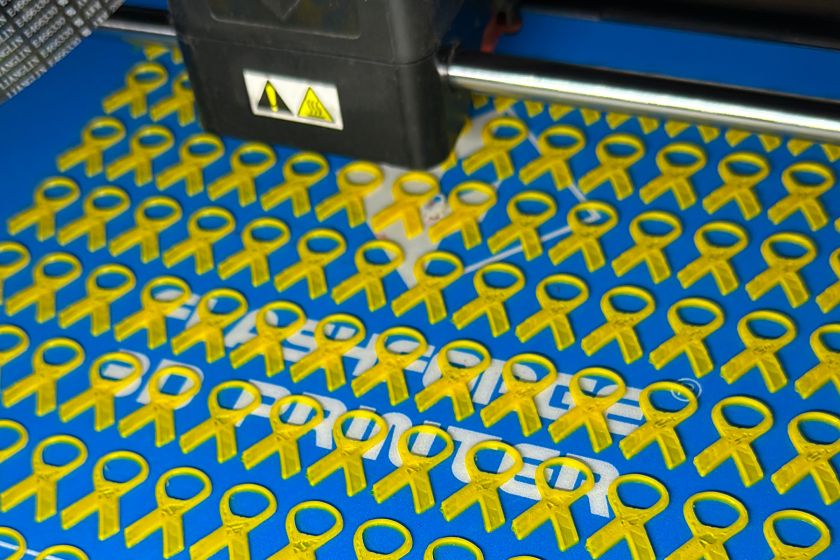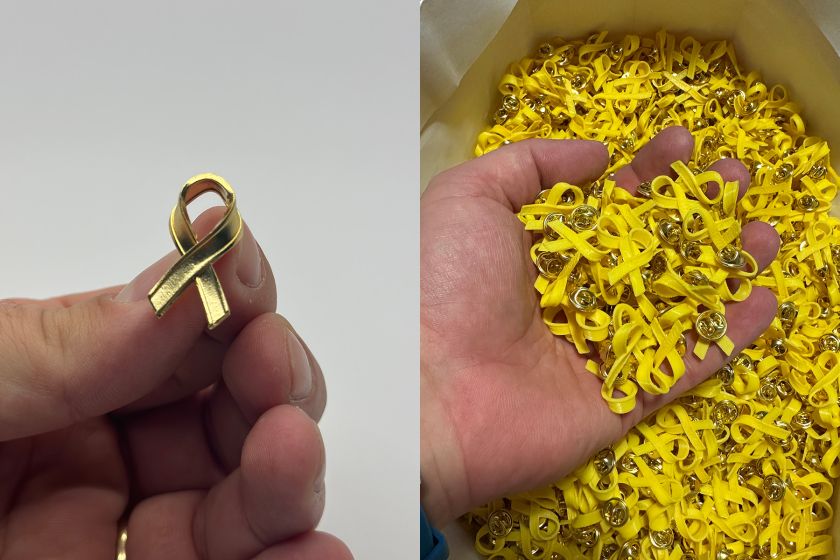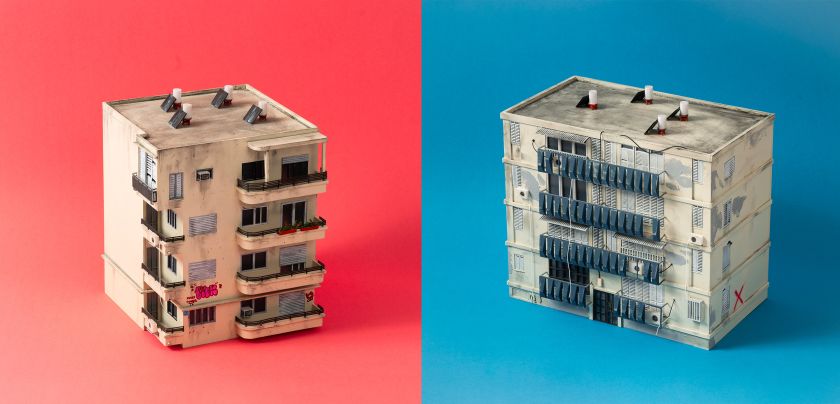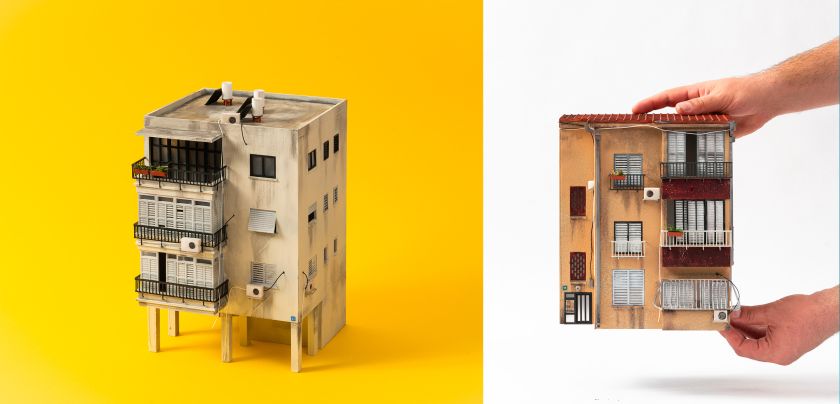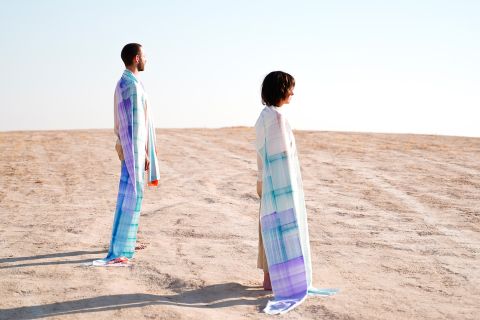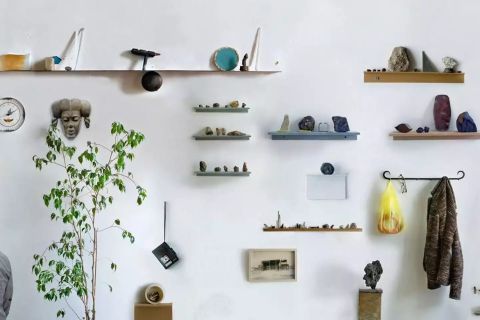Bezalel News
חדשות בצלאל
أخبار بتسلئيل
Bezalel Editorial | The yellow pins: the designer responsible for one of the most significant symbols of the struggle
Every protest needs a symbol that will represent and identify it. The designer Shaul Cohen, a graduate of the ‘About Design’ track in the Master's Degree Program in Industrial Design, created one of the most significant symbols of the struggle nowadays. To mark the six-month anniversary of October 7th and the Iron Swords War, he spoke about the path he took from his studies at Bezalel until today, and about the pin of solidarity with the hostages.
The pins you created became one of the significant symbols of the struggle for the return of the abductees. How did you get to that?
"It all started when they tied a yellow ribbon on my car door handle and the ribbon didn't last. I printed one pin in the studio to have on my work apron."
The pins generated interest very quickly. How did it spread?
"I took a picture of the pin and uploaded it to my story. People started asking over and over how I got it. I had around 300 metal pins and metal brackets in the studio, so I printed 300 yellow plastic ribbons and offered them to anyone interested who came to my studio to receive as a gift. All 300 were collected within two or three days and the demand began to grow."
How did you manage to produce so many pins in a short time? And more during a war?
"I was looking for a supplier of metal pins in Israel because ordering from China at the beginning of the war was an impossible task. I found an importer from Rishon LeTzion who agreed to sell a minimum of 5,000 pins. I begged him to sell me less because I didn't believe I would have anything to do with such a quantity. The importer did not agree and I purchased 5,000 pins from him knowing that they would remain in my studio for years. A week later, I went to him to purchase another 5,000 pins and people from all over the country continued to come to my studio to receive pins as a gift."
How do you print the pins?
"I built the file in a 3D software (Fusion 360). I print the pins with 3D printers in my studio and at Tridi Factory in Florentine, then stick the metal pins with high-quality glue and close them 😊"
Are pins still needed today?
"Today, after I have already created over 100,000 pins, I still continue to give out 2 pins as a gift to anyone who wants and sells a larger quantity for five shekels. Companies and organizations that purchase pins for their employees allow me to continue giving out pins for free non-stop.
Are you in direct contact with the Hostage and Missing Families Forum?
"I sent the printing file for the pin to the Hostage and Missing Families Forum so they could sell it and I think they managed to bring in over a million NIS thanks to the pin."
"It all started thanks to an open call I received in an email from Bezalel"
Let's go back a few years ago. How did you come to study at Bezalel?
"I arrived once by bus and that was a mistake. Since then only by car 😊"
Now the campus is in the city center, you can get there by train really easily. It’s a new era. what did you learn?
"I did a master's degree in industrial design, in the ‘About Design’ track, and it was one of the best decisions I ever made. A friend (Aden Ohana) enrolled me because he thought it would do me good and he was absolutely right."
What was your final project?
"Chanan de Lange guided my final project. I remember coming to him for the first meeting with some barely mediocre concepts, and he reminded me that once in one of the exercises in the course I did a parody of the world of design and asked if I wanted to develop it."
Is the final project still relevant to your work today?
"My final project dealt with humor and it is a project that I continue to develop to this day."
One of your well-known projects, in which you produce tiny models of buildings, miniatures, also started in Bezalel.
"It all started thanks to an invitation I received in an email from Bezalel - to participate in an exhibition at a museum in Berlin - I offered sketches to create a comparison between the Israeli Bauhaus and the German Bauhaus and there for the first time I built miniatures of buildings and fell in love!"
What is happening with the project today?
"After the exhibition I started building miniatures as a hobby and in a short time orders came and it turned into a business. Today in the studio we are four designers who build miniatures every day all day. The talented Ziv Roditi (a graduate of Bezalel) runs the studio and we receive orders to build models from Israel and abroad."
Before finishing, do you have a tip for designers just starting out?
"Work hard. Be better than anyone who competes with you for a job/project. The Netflix series will be available to watch next year as well."
